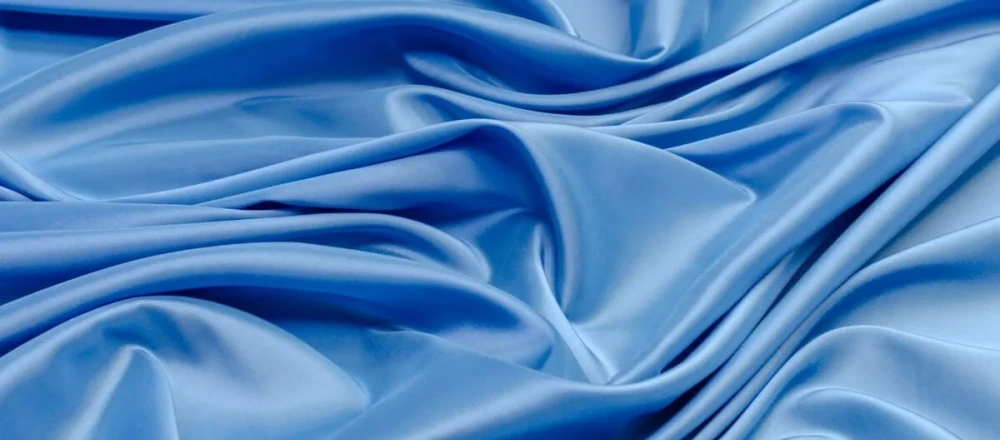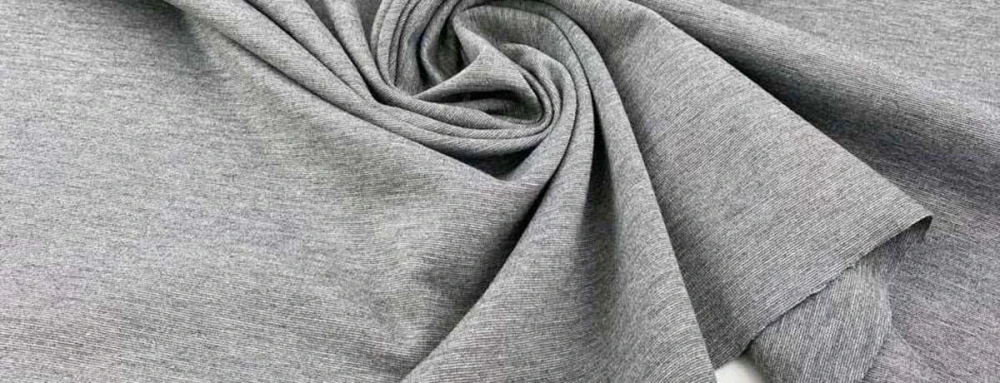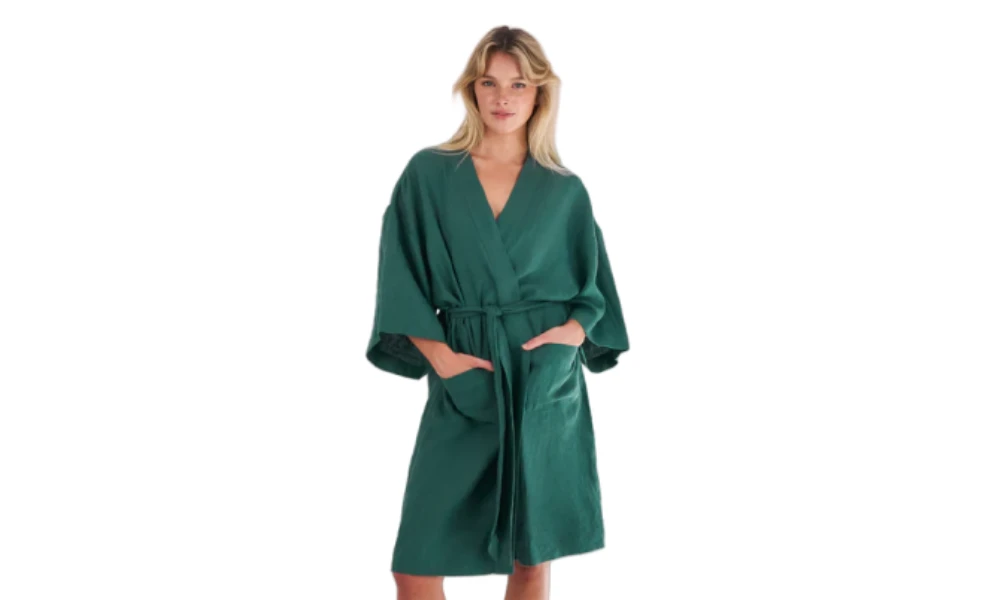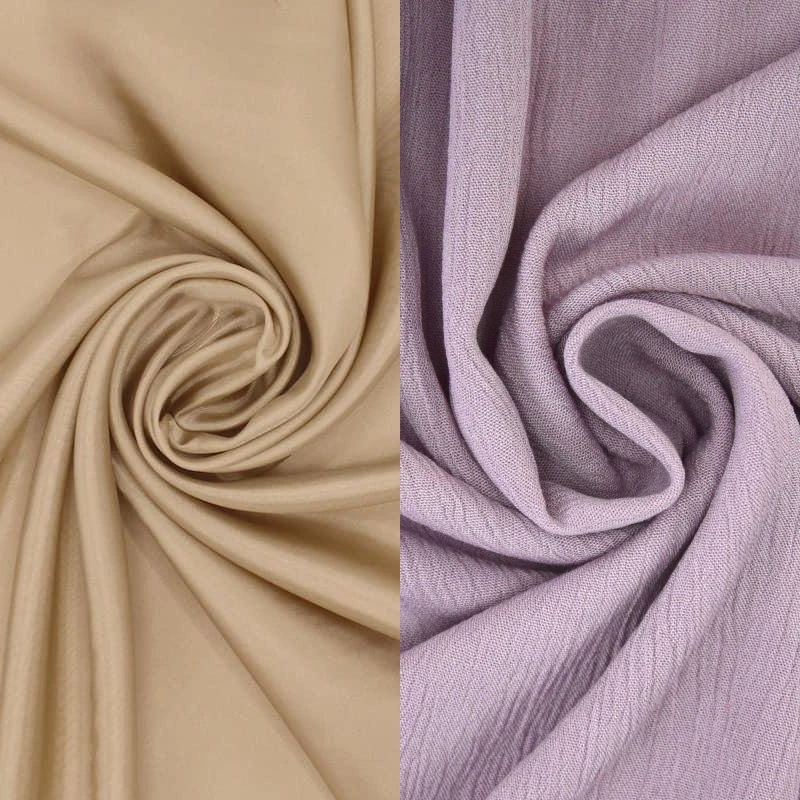Ever stood in a store, holding two tags—one says acetate, the other says viscose—and wondered which feels better for sleepwear? You want something soft, comfortable, and easy to care for.
The global market shows viscose and acetate make up millions of tonnes in production, yet only about a third of shoppers recognize the real sustainability differences. When it comes to acetate vs viscose, cost, comfort, and eco-friendliness matter.
If you’re looking for high-quality viscose pajamas, Friendtex offers trusted options designed for ultimate relaxation.
Key Takeaways
Understand the key differences between acetate and viscose. Acetate is made from cellulose acetate, while viscose comes from wood pulp. This affects their feel, appearance, and environmental impact.
Choose viscose for comfort and breathability. Viscose pajamas from Friendtex offer a soft, gentle touch, making them ideal for sleepwear and loungewear.
Consider the care instructions. Viscose is easier to maintain than acetate, which often requires dry cleaning and careful handling due to its low melting point.
Support sustainability with Friendtex. Their viscose products use certified wood pulp and eco-friendly production methods, making them a better choice for the environment.
Explore customization options. Friendtex offers a variety of sizes and styles in viscose, allowing you to find the perfect fit and design for your sleepwear.
Acetate vs Viscose: Key Differences
Composition and Origin
When you compare acetate vs viscose, you notice that both fabrics start with cellulose, but their sources and chemical makeup set them apart. Take a look at this table to see how each fabric is made:
Fabric Type | Primary Chemical Component | Source |
|---|---|---|
Viscose | Wood cellulose | Wood pulp |
Acetate | Cellulose acetate | Cellulose and acetic anhydride |
Acetate fabric comes from cellulose and acetic anhydride. The process involves acetylation, where cellulose reacts with sodium acetate and sulfuric acid at high temperatures. Viscose, on the other hand, uses wood pulp as its main ingredient. You get a fabric that feels soft and breathable.
The origin of these fabrics also affects the environment. Here are some things to consider:
Viscose production can lead to deforestation, which harms wildlife and ecosystems.
Sourcing wood pulp for viscose sometimes comes from ancient forests, causing habitat loss.
Both acetate and viscose use chemicals, raising concerns about pollution and worker safety.
Friendtex takes extra steps to make viscose more sustainable. The company uses certified wood pulp and closed-loop systems to recover chemicals and water. You get viscose pajamas that are gentle on the planet and comfortable for you.
Manufacturing Process
You might wonder, how is acetate fabric made? The process is complex and involves several steps. Here’s a quick breakdown:
Cellulose purification: Cotton linters are cleaned with alkali and bleach.
Activation: The fibers soak in glacial acetic acid.
Acetylation: Cellulose reacts to form cellulose acetate.
Hydrolysis: The acetylated cellulose changes to an acetone-soluble compound.
Precipitation: Acetate is added to remove sulfuric acid.
Washing and drying: The acetate fabric gets rinsed and dried.
Blending: Manufacturers blend fibers for quality and cost control.
Dope Preparation: Spinning solutions are created.
Spinning: Dry spinning forms acetate rayon fiber.
Viscose manufacturing looks different. You start with cellulose pulp, then:
Steeping: Soak the pulp in sodium hydroxide.
Pressing: Press the mass for the right ratio.
Shredding: Shred the alkali cellulose.
Aging: Let the cellulose age for a better texture.
Xanthation: React with carbon disulfide to make cellulose xanthate.
Dissolving: Dissolve in ca austic solution to create viscose.
When you choose between acetate vs viscose, you see that the manufacturing process shapes the final fabric. Friendtex’s viscose stands out because the company uses eco-friendly methods and certified sources. You get a fabric that feels luxurious and supports sustainable fashion.
Feel and Appearance of Acetate Fabric and Viscose
Texture and Sheen

When you touch acetate fabric, you notice its smooth, silk-like surface right away. It feels lightweight and almost slippery, which gives it a luxurious vibe. The acetate fabric texture and appearance stand out because of its very high-gloss finish. This shine makes it popular for evening wear and special occasion outfits.
On the other hand, viscose feels soft and a bit heavier in your hand. It offers a flexible drape and a slight sheen, which looks elegant but not flashy.
Here’s a quick comparison to help you see the difference:
Fabric | Texture Description | Sheen Level |
|---|---|---|
Acetate | Smooth, silk-like, lightweight, slippery | Very high-gloss |
Viscose | Soft, heavier, flexible | Slight sheen |
If you want something that catches the light and feels cool, acetate fabric might be your pick. If you prefer a gentle touch and understated shine, viscose could be the winner. The acetate fabric texture and appearance often appeal to those who love a polished look, while viscose brings a cozy, natural feel.
Drape and Comfort in Friendtex Viscose Pajamas
You probably care about how your sleepwear feels against your skin. Viscose pajamas from Friendtex offer a soft, breathable experience that feels gentle all night. The fabric drapes beautifully, hugging your body without clinging or feeling stiff.
This comfort comes from the way viscose moves and breathes, making it perfect for lounging or sleeping.
Scientists use several tests to measure drape and comfort in fabric. For example, the Kawabata evaluation system checks how finishing affects comfort. The fabric touch tester looks at mechanical properties, while thermal conductivity measurement shows how well the fabric keeps you cool or warm.
These tests prove that viscose stands out for softness and flexibility.
Acetate fabric also drapes well, but it feels cooler and sometimes less cozy for sleepwear. You might choose acetate fabric for its shine and smoothness, but viscose pajamas from Friendtex give you that plush, relaxed feeling you want after a long day.
When you slip into viscose, you get a blend of style, comfort, and a touch of luxury—ideal for both sleepwear and loungewear.
Durability and Care: Acetate vs Viscose

Longevity and Maintenance
When you look at sleepwear, you want something that lasts. The durability of a fabric can make a big difference in your daily routine. Acetate fabric feels smooth and looks shiny, but it comes with some disadvantages. You need to handle acetate with care because it has a low melting point.
If you use too much heat, the fabric can lose its shape or even melt. Acetate fabric often needs dry cleaning, which adds extra steps to your laundry day. You cannot tumble dry acetate fabric, so you must air dry it every time.
Viscose gives you more advantages when it comes to care. This fabric is easier to wash and maintain. You can machine wash viscose, but you should use cold water and gentle cycles.
Viscose fabric holds up well after many washes, especially when you follow the care instructions. If you mix viscose with other fabrics, just check the label before washing.
Here’s a quick table to help you compare care instructions:
Fabric Type | Care Instructions |
|---|---|
Acetate | Should not be tumble-dried due to low melting point. Care must be taken with heat. |
Viscose | Easier to care for, but should be washed with caution, especially when mixed. |
Acetate fabric has some advantages, like a glossy look, but the disadvantages include tricky maintenance. Viscose stands out for its easy care and durability, making it a smart choice for everyday wear.
Caring for Friendtex Viscose Robe

If you own a Friendtex viscose robe, you get the advantages of comfort and simple care. This fabric feels soft and luxurious, but you do not need to worry about complicated cleaning steps.
You can wash your viscose robe in cold water. Air drying helps keep the fabric smooth and prevents shrinkage. You do not need to dry clean, which saves you time and money.
Friendtex viscose products are designed to last. The fabric keeps its shape and softness, even after many washes. You get a robe that looks new and feels great every time you wear it.
The advantages of viscose fabric include breathability, durability, and easy maintenance. You do not face the disadvantages that come with acetate fabric, like heat sensitivity or special cleaning needs.
If you want sleepwear that stays comfortable and looks good, viscose fabric from Friendtex is a reliable choice. You enjoy the benefits of a long-lasting, easy-care garment without the worries that come with acetate fabric.
Environmental Impact of Viscose and Acetate
Sustainability in Friendtex Viscose Pajamas
You care about what goes into your sleepwear. When you choose viscose pajamas from Friendtex, you support a brand that puts sustainability first. Friendtex sources viscose from FSC-certified wood pulp. This means the wood comes from forests managed with care for people and wildlife.
The company uses closed-loop systems during production. These systems recover and reuse chemicals, which helps protect the environment.
Take a look at how Friendtex makes a difference:
Evidence Type | Description |
|---|---|
FSC-certified wood pulp | Wood comes from responsibly managed forests. |
Closed-loop systems | Chemicals get recovered and reused, lowering environmental impact. |
OEKO-TEX® Standard 100 certified | Pajamas are free from harmful substances. |
EcoVero™ viscose | Uses up to 50% less water and energy in production. |
Biodegradability | Viscose breaks down naturally, making it a better choice than synthetic fabric. |
You get a fabric that feels soft and luxurious, but you also help the planet. Friendtex holds certifications like OEKO-TEX® and FSC, showing a real commitment to sustainability. When you wear these pajamas, you support eco-friendly choices without giving up comfort.
Eco-Friendliness of Acetate Fabric
Acetate fabric looks shiny and feels smooth, but its environmental impact raises concerns. The production process uses chemicals like acetic anhydride and sulfuric acid.
These substances can harm the environment and people working in factories. Making acetate fabric also uses a lot of energy, which increases its carbon footprint.
Here are some key points to consider:
Acetate fabric can shed microplastics during washing.
These microplastics may end up in oceans and waterways.
Cellulose acetate is a known contributor to marine microplastic pollution.
You might think acetate fabric is a green choice because it comes from cellulose. However, the chemicals and energy used in production tell a different story. When you compare acetate and viscose, you see that Friendtex’s viscose pajamas offer a better path for sustainability and comfort.
What Is Acetate Fabric Used For? Cost and Accessibility
Acetate in Fashion and Home
You might wonder, what is acetate fabric used for? Acetate fabric shows up in many places, both in fashion and around your home. You see acetate rayon in linings, blouses, and dresses. It gives a smooth, shiny finish that feels soft against your skin.
Many designers pick acetate fabric for evening dresses, scarves, and even underwear because it drapes well and looks elegant. In the home, acetate rayon appears in curtains, sofa covers, and decorative cushions. It adds a touch of luxury to bedding and upholstery.
Here’s a quick acetate fabric summary of its main uses:
Industry | Applications |
|---|---|
Fashion | Linings, blouses, dresses, underwear, shirts, skirts, evening dresses, scarves, ties |
Home | Curtains, sofa covers, bedding, upholstery, decorative cushions |
Acetate rayon stands out for its glossy look and lightweight feel. You often find it in items that need a bit of shine or a silky touch. When you compare cost, acetate fabric usually sits in the mid-range. It costs less than silk but sometimes more than basic cotton or polyester.
Viscose can be similar in price, but you get more breathability and comfort with viscose, especially for sleepwear.
Viscose Options from Friendtex
If you want more choices, viscose from Friendtex gives you plenty of options. You can pick from a wide range of sizes, including petite and sizes, so everyone finds a perfect fit.
Friendtex lets you choose fabric materials like bamboo viscose, organic cotton blends, or silky satin. You can even customize designs, styles, and patterns to match your brand or personal taste. Pajamas, robes, sets, pants, shorts, and tops—Friendtex covers it all.
Here’s a table showing how you can personalize your viscose sleepwear:
Customization Aspect | Details |
|---|---|
Sizes | Petite, plus, and standard sizes |
Fabric Materials | Bamboo viscose, organic cotton blends, silky satin |
Designs | Unique themes, characters, patterns |
Styles | Pajamas, robes, sets, pants, shorts, tops |
Target Audience | Women, men, kids |
You also get easy access to Friendtex viscose products worldwide. Friendtex ships globally, so you can enjoy premium viscose sleepwear no matter where you live. The company’s focus on sustainability and quality makes these products a smart choice for anyone who values comfort and eco-friendly fashion.
Tip: If you want sleepwear that feels soft, looks stylish, and fits just right, check out the viscose options from Friendtex. You get comfort, customization, and worldwide delivery—all in one place.
Conclusion
You now know the five key differences between acetate and viscose. Here’s a quick recap:
Property | Acetate | Viscose |
|---|---|---|
Water Reaction | Hydrophobic | Hydrophilic |
Heat Reaction | Melts easily | More stable |
Cleaning Method | Dry clean only | Easier care |
If you want comfort, easy care, and sustainability, viscose stands out. Friendtex’s viscose pajamas and robes offer a soft, breathable feel and eco-friendly materials. Many customers say their sleep improved with these pajamas. Want to upgrade your loungewear? Visit Friendtex to explore or customize your perfect set.
FAQ
What makes viscose pajamas a good choice for sensitive skin?
You get pajamas that feel soft and gentle. Viscose pajamas are hypoallergenic and breathable. They help keep your skin cool and comfortable, even if you have allergies or sensitive skin.
How do I care for my Friendtex viscose robe?
Wash your robe in cold water. Air dry it flat to keep the fabric smooth. Avoid bleach and high heat. This simple care routine helps your robe stay soft and last longer.
Can I wear viscose pajamas all year round?
Yes! Viscose pajamas work well in every season. The fabric breathes in summer and keeps you cozy in winter. You stay comfortable no matter the weather.
What is viscose rayon, and how is it different from acetate?
Viscose rayon comes from wood pulp and feels soft, like cotton or silk. Acetate uses cellulose and acetic acid, giving it a shiny look. Viscose rayon offers more breathability and comfort for sleepwear.
Are Friendtex viscose products available in different sizes and styles?
Absolutely! You can find a wide range of sizes, from petite to plus. Friendtex also lets you pick from many styles, colors, and patterns. You get sleepwear that fits your taste and body.


